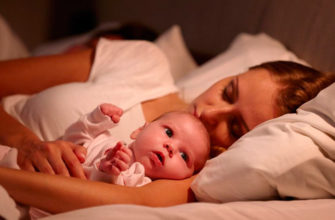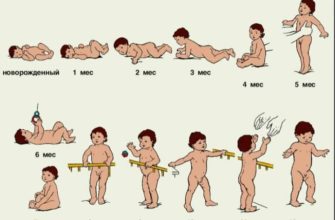Does your baby take the first steps, but he flopped down on the floor, startled? So, the crumbs already have a desire to move independently, without the help of adults, but something else interferes. You can help him learn a new type of movement, but you shouldn’t specially focus on the fact that the child goes as soon as possible. We tell you why.

The first steps of the baby is a real achievement. Some closer to the year show the ability to move independently, while others lack confidence in their own abilities for another 2-3 months. There are no strict standards and pediatric canons. Both peanuts can be considered quite developed. Nature herself will set a date when your child will take the first timid step. The task of parents is not to force the child to walk at all costs.
Parents, especially the parents of the first-born, want the baby to show genius in everything. The first word was said earlier than others, before he began to sit, stand and take the first steps. To speed up the process, they ask for the advice of pediatricians, teachers, older people who are experienced in raising children. But it is much more important in this matter to show patience, to wait for the physiological readiness of the infant to begin to walk - everything has its own time, everything should take its course. Thus, you will not harm the health of the child and enable him to take the first important steps in his life.
Is it possible to stimulate the first steps
Of course, it is necessary to encourage the baby to take his first steps and confidently go. Exercises with a new toy are suitable for this. At a distance of two steps of the baby, give him a bright toy. A short way will be done, even if not the first time. The baby sees his mother’s hands, I’m sure that nothing bad will happen. And an interest in getting a doll or a toy will certainly make him take these two steps.
But to walk for a long time around the room, holding the child by the handles, “developing” the ability to walk in him, is not worth it (experts recommend this). It is believed that a person from birth is able to master the main physiological processes. The ability to walk is inherent in nature. Trying to "make" the way around the room, holding the baby by the hands, is not necessary. He will deal with it himself when the time comes. Physiological processes cannot be artificially accelerated. There is a time for everything: a little earlier or a little later than his peers, but your little one will learn to walk. Each baby develops in its own way, and there is no need to rush it.Strength appears gradually in the legs. At first, it is enough to stand for a short while, leaning on furniture, then the baby will go, leaning on various objects, furniture in the room. Then - he himself will overcome short distances.
What you should not do when a child learns to walk
Do not rush the development of your child. Even if he goes later than his peers, he will cope with it 100%, without any risk to health. What should parents not do?

1. Strongly patronize the baby and deprive him of freedom of action and choice
You can not deprive the baby of the freedom of action and choice. Do not rush to him every time he stumbles, do not support the baby every time he tries to get up and give him everything that he asks. It is better to create a situation in which the child wants to get to the toy himself by doing a few steps. When he has the opportunity of independent decisions, development will not be inhibited. Otherwise, you will slow down the process of development of the child, not allowing him to think, independently make decisions and act.
2. Leave in the crib and playpen for a long time
Being a long time in a crib or arena, the little one tries to stand, grabbing the side. The child gets tired quickly. Uneven load on the legs can cause deformation of the feet and sprain.
3. To hope that the baby will go faster with walkers
Modern walkers are a real developmental complex. Light and maneuverable, they allow the baby to fearlessly and quickly move around the house. But they not only benefit, but can also harm the baby. You have to push your feet off the floor, and this is a serious load on your legs, and with such movement, the baby’s foot may become deformed. Instead of learning to walk straight, the child will try to sit down, as walkers allow this. Thus, walkers can postpone the moment when the child will go on their own for several months.
4. Buy shoes before necessary
Shoes and shoes for the baby will need only after the start of a confident walk. It is a mistake to think that shoes will simplify the ability to move independently. Wait for the first steps for short distances, and then train the legs to shoes. In the meantime, get along with booties for babies.
[sc name = ”rsa”]
5. To put the baby on his feet specifically
If the toddler prefers to crawl, then it is too early for him to walk. It is important that the time of the first steps coincides with the physiological, biological development, genetic features are taken into account. Healthy legs with a well-formed foot will definitely go, albeit later than relatives expected. When you put your child on its feet, there is a danger of disrupting the formation of the foot.
We also read:
- What months do children begin to walk?
- Why the child is afraid to walk independently - how to help the baby
- We teach a child to walk - 10 tips
- Why does the child tiptoe - what to do?
How to teach a child to walk? Teaching a child to walk independently
The child walks at 9 months. Is it necessary to rejoice?








